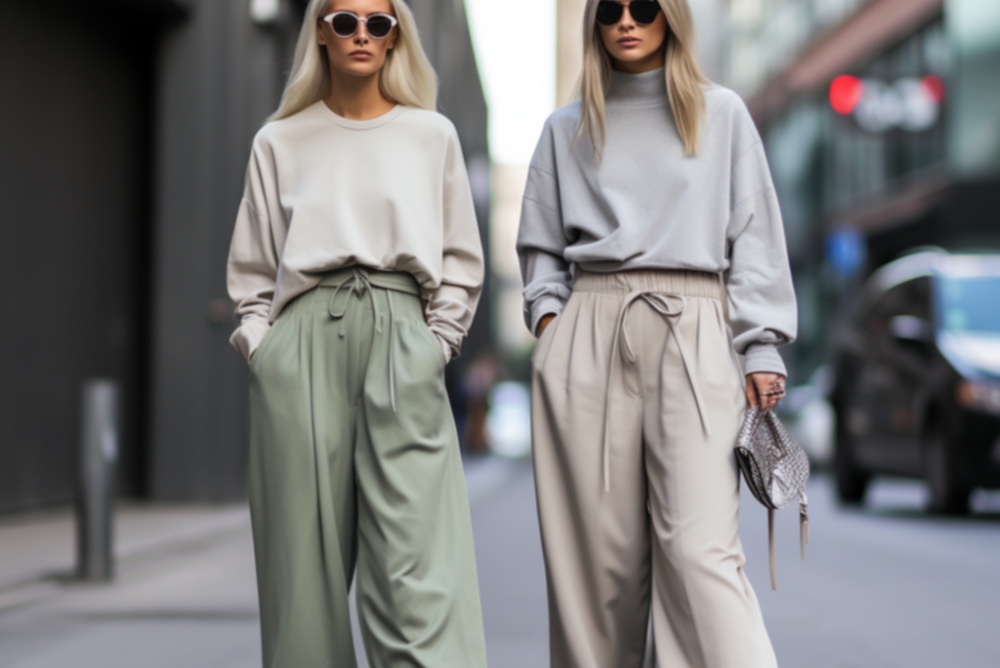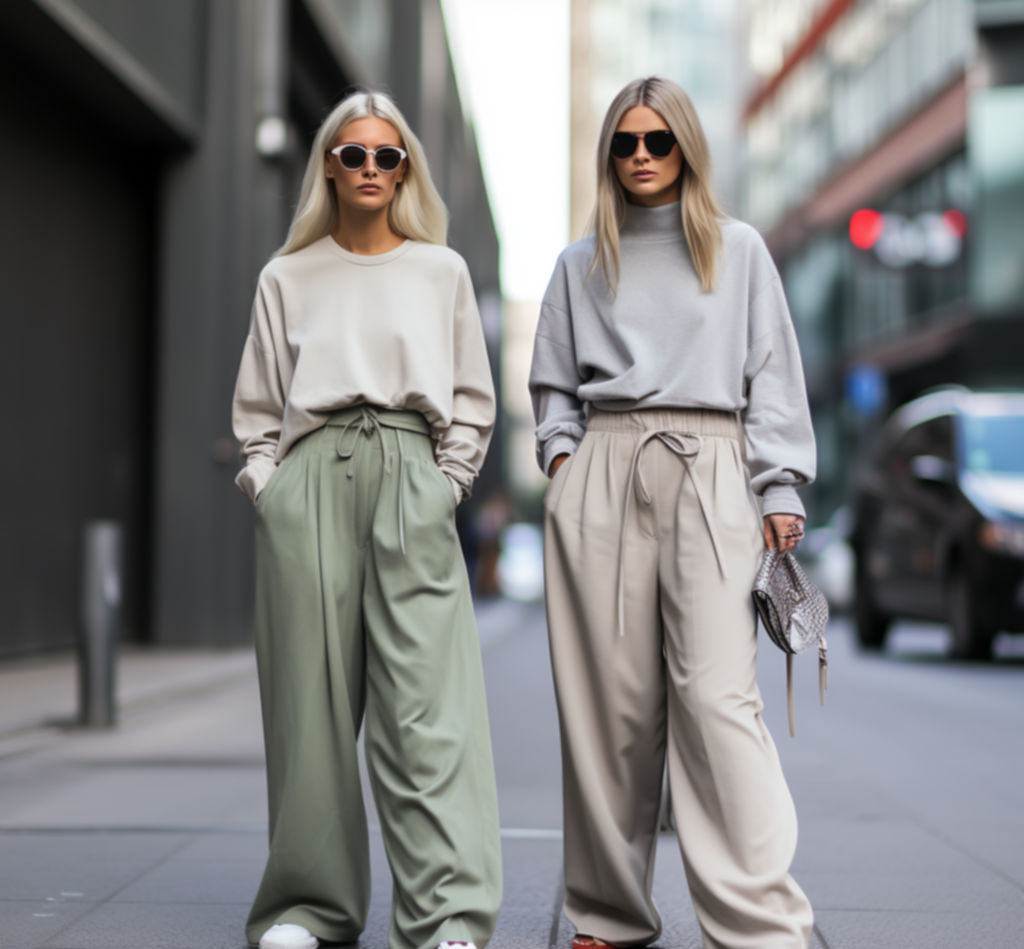Launching Women's Wear: Steps to Stellar Brand Success


Fashion is more than just clothing – it's an expression of personal identity and culture. As we move further into the 21st century, the allure of starting a women's wear brand has only grown. With the emergence of fast fashion, changing trends, and an increasing emphasis on individual style, there's no better time to dive into the industry.
However, while the thought of creating a clothing line is thrilling, the path is fraught with challenges. One of the initial hurdles is finding a dependable manufacturer who can translate your designs into high-quality garments. A manufacturer like Odmya can be a game-changer. With its stellar reputation for efficient mass production, competitive pricing, and rapid delivery, Odmya has made a mark as a go-to clothing manufacturer in China.
But why is choosing the right manufacturer so crucial? The simple answer is that they are the backbone of your brand. They bring your designs to life, ensuring that the finished product reflects your vision and meets market demands. A trustworthy manufacturer not only guarantees quality but also ensures timely deliveries, which is vital in the fast-paced fashion world.
In the forthcoming chapters, we'll navigate the various stages of establishing a successful women's wear brand, from understanding market trends to marketing your brand effectively. This comprehensive guide aims to provide budding entrepreneurs with insights, tips, and actionable steps to make their fashion dreams a reality.
Understanding the Women's Wear Market
Fashion, at its core, is a reflection of society's shifting tastes and values. As you embark on your journey to establish a women's wear brand, it's imperative to deeply understand the market you're entering. This chapter will guide you through the nuances of the women's wear market and how to position your brand effectively within it.
a. Overview of the Global Women's Wear Market
The women's wear sector, a significant portion of the global fashion industry, has witnessed exponential growth over the past decade. With a predicted valuation of over $800 billion by 2025, it presents vast opportunities for newcomers and established brands alike.
b. Current Trends and Consumer Preferences
Understanding and forecasting trends is a cornerstone of success in fashion. Trends like athleisure, sustainable fashion, and inclusive sizing have recently dominated the market. However, remember that trends are transient. It's crucial to balance trendy pieces with timeless classics in your collection.
c. Niche Markets within Women's Wear
The women's wear landscape isn't just about mainstream fashion. Niche markets, like maternity wear, plus-size fashion, and sustainable garments, are carving out significant market shares. Identifying and tapping into these niches can provide distinct advantages, especially for startups.
d. Market Research Methods
Before plunging into production, invest time and resources in thorough market research:
- Surveys & Questionnaires: Engage directly with potential customers to gauge their preferences.
- Competitor Analysis: Identify gaps in the offerings of existing brands and find ways to differentiate your brand.
- Fashion Forecasting: Utilize platforms like WGSN to anticipate upcoming trends and incorporate them into your designs.
Tips for Designing Women's Wear
Fashion design is an intricate blend of art and science. This chapter delves into the essentials of designing compelling women's wear that resonates with your target audience.
a. The Design Process
Initiate with inspiration, whether it's from art, nature, or historical fashion. Sketch your designs, refine them, and finalize a cohesive collection that tells a compelling story.
b. Balancing Aesthetics with Functionality
While a garment might look stunning, it must also be comfortable and functional. Prioritize the use of breathable fabrics, ensure accurate sizing, and pay attention to the finishing touches that elevate a garment's usability.
c. Understanding Seasonal Trends
Fashion operates in seasons: Spring/Summer and Fall/Winter. It's essential to align your collection with the expected weather conditions and festivities of each season.
d. Importance of Feedback
Before going into full-scale production, create prototypes and gather feedback from potential customers, peers, or industry experts. This iterative process helps refine your designs to perfection.
Choosing the Right Material for Your Clothing Line
Materials play a pivotal role in defining the quality, comfort, and appeal of your garments. This section will guide you through selecting materials that align with your brand's ethos and customer expectations.
a. Popular Fabrics for Women's Wear
From airy cottons for summer dresses to luxurious silks for evening wear, understanding the properties of various fabrics is paramount. Source fabrics that enhance your designs and provide comfort to the wearer.
b. Sustainability and Ethical Sourcing
The modern consumer is increasingly conscious of sustainability. Opt for eco-friendly fabrics and ethical sourcing methods. This not only boosts your brand's image but also contributes positively to the environment.
c. Working with Suppliers
Building strong relationships with fabric suppliers ensures consistent quality and timely deliveries. Regularly inspect the fabrics and negotiate terms that are favorable for both parties.
d. Quality Checks
Always perform rigorous quality checks. From the fabric's colorfastness to its durability, ensure every material meets your brand's standards.
Finding the Perfect Clothing Manufacturer: Spotlight on Odmya
Establishing a relationship with the right clothing manufacturer is tantamount to the success of your women's wear brand. Here, we'll deep-dive into the importance of selecting the right partner and explore the unique offerings of Odmya, a standout manufacturer in China.
a. Why Manufacturing Location Matters
The location of your manufacturing partner impacts various aspects:
- Costs: Labor and production costs differ from region to region.
- Quality: Certain areas, like China, have a reputation for producing high-quality garments.
- Logistics: Proximity can influence shipping times and costs.
- Regulations: Different countries have distinct regulations regarding production, labor, and environmental factors.
b. What to Look for in a Clothing Manufacturer
Here are some critical attributes to consider:
- Experience: How long they've been in the industry and who they've worked with.
- Specialization: Whether they cater to women's wear specifically.
- Capacity: Their ability to handle your order sizes.
- Communication: Easy and clear communication is vital to translating your vision.
c. Benefits of Partnering with Odmya
Odmya shines in the world of women’s clothing manufacturing for several reasons:
Mass Production Capabilities: Odmya can handle large order sizes efficiently, ensuring consistency across every piece.
Competitive Pricing: Their operational efficiencies allow for competitive pricing without compromising quality.
Swift Deliveries: Fast turnarounds ensure you meet market demands promptly.
One-Stop Solution: Odmya offers end-to-end services, from design conceptualization to the final product delivery, streamlining the entire process for brands.
d. Steps to Establish a Partnership with a Manufacturer
Initial Contact: Reach out with a clear brief about your brand and requirements.
Samples: Before bulk ordering, get samples produced to check quality and workmanship.
Negotiations: Discuss pricing, delivery timelines, and payment terms.
Site Visit: If possible, visit the manufacturing facility to gain insights into their operations.
Final Agreement: Once satisfied, draft a detailed contract outlining all terms and commence your partnership.

Costing and Pricing Your Products
Understanding your cost structure and devising a sound pricing strategy is key to your brand's profitability and longevity.
a. Cost Breakdown
It's crucial to be aware of all costs involved:
Production Costs: Including material, labor, and manufacturing.
Operational Costs: Warehousing, staff, utilities, etc.
Marketing & Promotion: Costs to market and advertise your brand.
Miscellaneous Costs: Unforeseen expenses that might arise.
b. Pricing Strategies for a Competitive Market
Cost-Plus Pricing: Mark up the cost price by a certain percentage to ensure profit.
Competitive Pricing: Price your products based on competitors’ offerings.
Value-Based Pricing: Price based on perceived value to the customer.
c. Balancing Profit with Affordability
While profitability is essential, pricing should also reflect the brand's value proposition and target market's willingness to pay.
Marketing and Promotion of Your Women’s Wear Brand
In a saturated market, effective marketing can set your brand apart.
a. Branding and Identity
Craft a memorable brand story and aesthetic. This becomes the foundation for all marketing efforts.
b. Digital Marketing Strategies
Website: An intuitive, mobile-friendly website with SEO optimization.
Email Marketing: Regular updates and promotions to your subscribers.
PPC and Paid Advertisements: Targeted campaigns to boost visibility and sales.
c. Leveraging Social Media
Platforms like Instagram, Pinterest, and TikTok are pivotal for fashion brands. Engage influencers, run ads, and foster a strong community around your brand.
d. Collaborations and Partnerships
Partner with other brands or influencers to tap into their audience and provide mutual value.
Managing Deliveries and Inventory
In the fast-paced world of fashion, managing your inventory and ensuring timely deliveries can make or break your brand's reputation. In this section, we'll explore strategies to ensure seamless operations.
a. Inventory Management Techniques
Just-In-Time (JIT): Produce garments in response to demand, reducing storage needs and costs.
Economic Order Quantity (EOQ): A formula that determines the ideal order quantity, balancing ordering and holding costs.
Dropshipping: Directly ship products from manufacturers to consumers, eliminating the need for inventory.
b. Efficient Warehousing
Choose a location that's accessible, offers ample storage, and can accommodate future growth. Employ advanced warehousing solutions, like RFID tracking, to streamline inventory management.
c. Handling Returns and Exchanges
Implement a hassle-free return and exchange policy. This not only boosts customer trust but also aids in managing inventory more effectively.
d. Partnering with Reliable Logistics Providers
Collaborate with logistics providers known for their punctuality, packaging standards, and transparent tracking systems.
The Role of Sustainability in Women’s Wear
Sustainability is more than just a buzzword; it’s an imperative in today's fashion world. Here, we explore the significance of sustainable practices in the women's wear industry.
a. The Environmental Impact of Fast Fashion
The rapid turnaround of fast fashion results in significant environmental concerns, from wasteful water consumption to harmful chemical use. Brands are now being held accountable for their ecological footprints.
b. Sustainable Materials
Incorporate fabrics like organic cotton, bamboo, and recycled materials. Such fabrics not only appeal to eco-conscious consumers but also have a reduced environmental impact.
c. Ethical Manufacturing Practices
Working with manufacturers like Odmya, known for their ethical practices, can significantly boost a brand's image. Ethical practices encompass fair wages, proper working conditions, and ensuring no child labor.
d. Slow Fashion Movement
Aligning with the slow fashion ethos, brands can emphasize quality over quantity, producing timeless pieces that last and thereby reducing waste.
Concluding Thoughts: Setting the Path Forward
Starting a women's wear brand, while exciting, involves meticulous planning, a deep understanding of the market, and unwavering commitment.
a. Continuous Learning and Adaptation
The fashion industry is ever-evolving. Brands must remain agile, adapting to shifts in consumer preferences, technological advancements, and global trends.
b. Customer-Centricity
Centring your brand around the needs and desires of your target audience ensures long-term loyalty and success.
c. Embracing Technological Advancements
From AI in fashion design to augmented reality fitting rooms, leveraging technology can provide a competitive edge.
d. Fostering Collaborative Partnerships
Beyond manufacturers, cultivate relationships with designers, influencers, marketers, and logistics providers. These collaborations can amplify your brand's reach and influence.
FAQs
Why is choosing the right manufacturer like Odmya crucial for my brand?
Choosing the right manufacturer ensures quality, timely deliveries, and can also influence the brand's reputation. Odmya's experience and comprehensive services make it a reliable choice.
How can I ensure my clothing brand is sustainable?
Opt for sustainable materials, ensure ethical manufacturing practices, and align with the slow fashion movement. Prioritize long-lasting quality over quantity.
Is there a significant difference between fast fashion and slow fashion?
Yes, fast fashion emphasizes rapid production and frequent trends, often at an environmental cost. Slow fashion focuses on durability, ethical practices, and timeless designs.
How do I set the right price for my clothing items?
Consider production and operational costs, marketing expenses, and any miscellaneous costs. Factor in your brand's value proposition and your target market's willingness to pay.
Why is inventory management essential for a clothing brand?
Efficient inventory management prevents overstocking or stockouts, helps in cash flow management, and ensures customers receive their orders promptly.





-500x500.jpg)
-500x500.jpg)
-500x500.jpg)
-500x500.jpg)
-500x500.jpg)